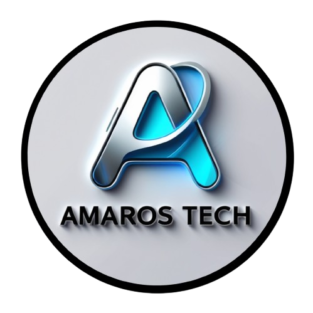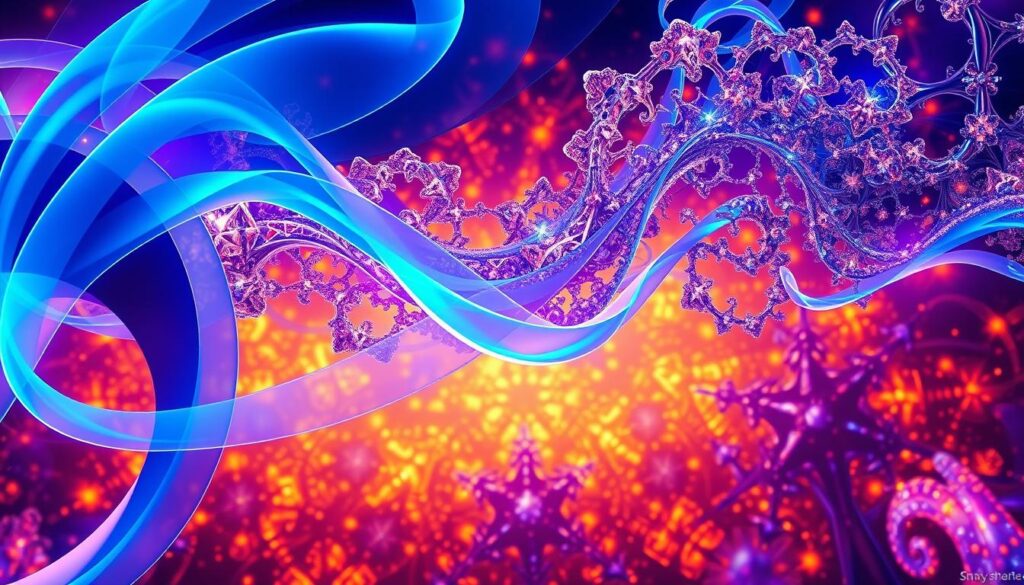
The world of digital creativity is evolving fast. By 2025, the AI-generated art market is expected to reach $5.3 billion, offering new ways for artists to thrive. Nearly 30% of digital creators already use these tools to enhance their work.
Emerging tech opens doors for monetizing unique images. Platforms like Etsy and ArtStation make selling art simpler than ever. Whether you’re a beginner or a pro, this guide will help you navigate the future of creative income.
Key Takeaways
- The AI art market will grow to $5.3 billion by 2025
- 29% of digital artists already use AI tools
- New tech creates fresh earning opportunities
- Top platforms include Etsy and ArtStation
- Both beginners and experts can benefit
The Booming AI Art Market: Opportunities in 2025
The creative economy is undergoing a radical transformation. By 2025, the art market for generative content will hit $5.3 billion, fueled by tools that blend human creativity with machine precision. Nearly 30% of professionals now integrate these technologies into their workflows.
Projected $5.3 Billion Market Growth
Industry reports highlight explosive demand. Statista notes NFT sales peaked at $11.16 billion, signaling renewed interest in digital ownership. This resurgence complements traditional sales models, from prints to licenses.
29% of Digital Artists Now Use AI Tools
Adoption rates soar as tools become more accessible. Platforms like Midjourney attract both hobbyists and studios. Case studies, such as Paul Rose’s clip art business, prove scalability—his team generates 500+ assets monthly.
Emerging Trends in AI-Generated Content
Game assets and personalized commissions dominate. The US Copyright Office’s recognition of AI collages, like A Collection of Objects Which Do Not Exist, validates legal potential. Key trends include:
- Hybrid workflows: Artists refine AI outputs for unique styles.
- NFT 2.0: Royalty splits and dynamic metadata gain traction.
Essential Tools for Creating AI Art in 2025
Powerful platforms are reshaping how artists bring concepts to life. Whether you’re a beginner or a seasoned pro, the right tools can elevate your work. Below, we break down the top options for 2025.
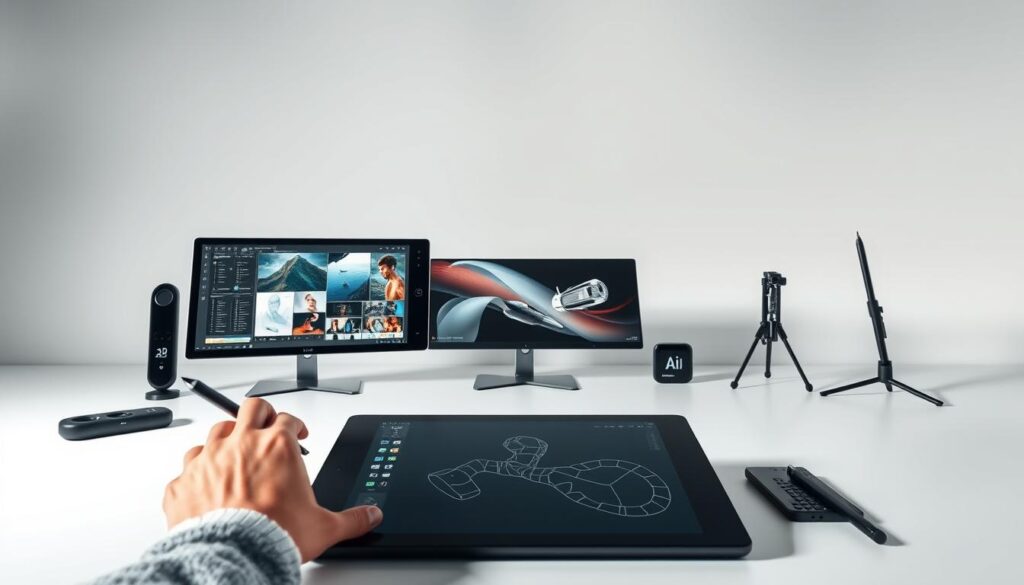
DALL-E 3: Best for Beginners and Versatility
DALL-E 3 stands out for its user-friendly interface. Free users get 3 images daily, while ChatGPT Plus unlocks unlimited access for $20/month. Its mobile/web integration simplifies on-the-go creativity.
Midjourney: Professional-Grade Image Generation
Midjourney excels in commercial projects. At $10/month for 200 images, its Discord-based workflow suits teams. Expect photorealistic results and intricate details.
Leonardo AI: The Rising Star for Game Assets
Free users receive 150 daily credits to create images. Ideal for 3D game assets, it offers specialized models for textures and characters. Studios love its batch-processing features.
Comparing Features and Pricing
Here’s a quick breakdown:
- DALL-E 3: Free tier available; best for casual use.
- Midjourney: Affordable pro plans; excels in realism.
- Leonardo AI: Free credits; optimized for game dev.
Choose based on your needs. Budget-friendly platforms like DALL-E 3 suit hobbyists, while Midjourney and Leonardo AI cater to professionals.
Mastering AI Art Creation Techniques
Quality outputs depend on strategic techniques beyond basic generation. Whether you’re refining prompts or enhancing images, these methods elevate your results. Let’s break down the essentials.
Crafting Effective Prompts for Quality Results
Strong prompts have three elements: content, style, and technical details. For example, “A cyberpunk cityscape at dusk, neon lights reflecting on wet pavement, 8K resolution” guides the tool precisely.
Follow this step-by-step framework:
- Define the subject: Be clear about what you want to create.
- Specify the style: Mention artistic influences (e.g., “in the style of Van Gogh”).
- Add technical cues: Resolution, lighting, or camera angles.
Post-Processing and Image Enhancement
Raw outputs often need polishing. Use Gigapixel AI ($99.99) to upscale prints without losing clarity. Photoshop’s Super Zoom sharpens details for high-resolution displays.
Andrei Kovalev’s A3 print prep shows this workflow:
- Upscale the image 4x.
- Adjust contrast and saturation.
- Export as a TIFF for print.
Developing a Consistent Artistic Style
Use the same elements across generators. Document color palettes, brush styles, and themes. This ensures your work is recognizable, whether on Etsy or ArtStation.
For copyright protection, save prompt logs and edit histories. These prove your creative input.
Top Platforms to Sell AI Art in 2025
Choosing the right platform can make or break your creative business. Each marketplace caters to different audiences and formats. Below, I’ll break down the best options for selling art in 2025.
Etsy: For Prints and Digital Downloads
Etsy remains a top choice for digital art and physical prints. Sellers average $50-$200 per standard resolution piece. Optimize listings with:
- SEO-rich titles: Include keywords like “fantasy wall art.”
- High-quality mockups: Show how prints look in homes.

ArtStation: Connecting with Professional Clients
ArtStation attracts studios and freelancers. Premium memberships ($6.99/month) enhance portfolio visibility. Stand out by:
- Showcasing WIPs (works in progress) to demonstrate skill.
- Networking in industry groups for commission opportunities.
Patreon: Building Recurring Revenue Streams
Patreon lets you monetize fans through tiered subscriptions. Top creators earn $500+/month by offering:
- Exclusive tutorials or early access to new work.
- Custom commissions for high-tier supporters.
Emerging NFT Marketplaces
New platforms like Foundation focus on AI-generated collections. Look for:
- Low minting fees and eco-friendly blockchains.
- Royalty features (e.g., 10% on secondary sales).
Diversify across these channels to sell art effectively. Track performance to double down on what works.
Pricing Strategies for AI-Generated Art
Smart pricing can transform your passion into a sustainable income stream. Whether you sell digital downloads or exclusive rights, your strategy should reflect value, demand, and platform dynamics.
Digital Downloads: $10-$50 Range
Standard-resolution images typically sell for $10-$50. Upsell high-res files ($200+) for clients needing print-quality artwork. Etsy sellers like TheDigitalCraftCo boost profits by bundling:
- Multiple file formats (JPEG, PNG, SVG).
- Commercial licenses for an extra $20-$50.
Custom Commissions: $50+ Pricing Models
Charge based on complexity. A simple portrait might start at $50, while detailed scenes hit $500+. Offer tiered options:
- Basic: 1 revision, 48-hour delivery.
- Premium: Unlimited revisions, 24-hour turnaround.
Premium Pricing for Exclusive Rights
Limited-edition artwork (1-10 copies) commands $1,000-$5,000. Buyers pay a premium for rarity. Factor in platform fees (3-5%) when setting prices.
“We doubled revenue by switching to value-based pricing—clients now pay for uniqueness, not just pixels.”
Adjust prices dynamically. Track sales data and competitor rates to stay competitive. Remember, your goal is to make money while keeping your artwork accessible.
Building a Winning AI Art Portfolio
A standout portfolio turns casual viewers into paying clients. Focus on 20-30 pieces that highlight your range and skill. Platforms like Artsi (rated 4.5/5) simplify this process with drag-and-drop tools.
Selecting Your Best Work
Quality trumps quantity. Start with 5-10 high-impact creations—these anchor your body of work. Ask peers for feedback to identify standout pieces.
Prioritize diversity: include character designs, landscapes, and abstract content. This shows versatility to potential buyers.
Organizing by Style and Category
Group similar work into themes like “Cyberpunk” or “Minimalist.” Use folders on your website for easy navigation. A cohesive narrative boosts professionalism.
For digital galleries, apply these curatorial principles:
- Lead with your strongest piece—it sets the tone.
- Rotate featured works monthly to keep your website fresh.
Writing Compelling Descriptions
Descriptions sell your creations. Use this template:
“‘Neon Dreams’ (2025) — A 4K AI-generated cityscape blending retro-futurism with vibrant hues. Ideal for game backgrounds or wall art.”
Include keywords like “fantasy art” for SEO. Always add a call-to-action: “License this piece for your project.”
Protect your work with subtle watermarks. Tools like Adobe Lightroom automate this while preserving visual appeal. Track engagement via Google Analytics to refine your content strategy.
Marketing Your AI Art for Maximum Reach
Visibility separates hobbyists from thriving artists in today’s crowded digital space. With 83% of buyers discovering work through visual search, strategic promotion is non-negotiable. Here’s how to amplify your presence across key channels.
Social Media Strategies for Visual Content
Leverage social media algorithms by posting consistently. Platforms like Instagram and TikTok prioritize reels—share timelapses of your creative process. Dynamic Yield reports personalized campaigns boost conversions by 35%.
Pro tips for digital artists:
- Batch-create content: Schedule 3-5 posts weekly using Later or Hootsuite.
- Engage with niche hashtags (#AIPortrait, #DigitalFantasy).
- Run UGC campaigns—feature buyers showcasing your art.
SEO Optimization for Art Marketplaces
Rank higher on platforms like Etsy with keyword-rich listings. Include terms like “custom AI wall art” in titles and descriptions. Optimize images for visual search:
| Element | Best Practice |
|---|---|
| Alt Text | Describe colors, style (e.g., “cyberpunk neon cityscape”) |
| File Names | Use hyphens: fantasy-art-print.jpg |
| Backlinks | Guest post on design blogs with portfolio links |
Email Marketing for Repeat Customers
Turn one-time buyers into loyal fans. Send a 3-email sequence:
- Welcome: Share your origin story + discount.
- Showcase: Highlight bestsellers with testimonials.
- Exclusive: Offer early access to new collections.
“Predictive analytics helped us identify high-value clients—our email ROI jumped 50%.”
Track open rates with Mailchimp. Segment lists by purchase history to save time and boost relevance.
Diversifying Your AI Art Income Streams
Smart creators know that multiple income streams provide financial stability. While selling individual pieces works, combining methods maximizes earnings. Let’s explore three effective ways to make money from your creative work.
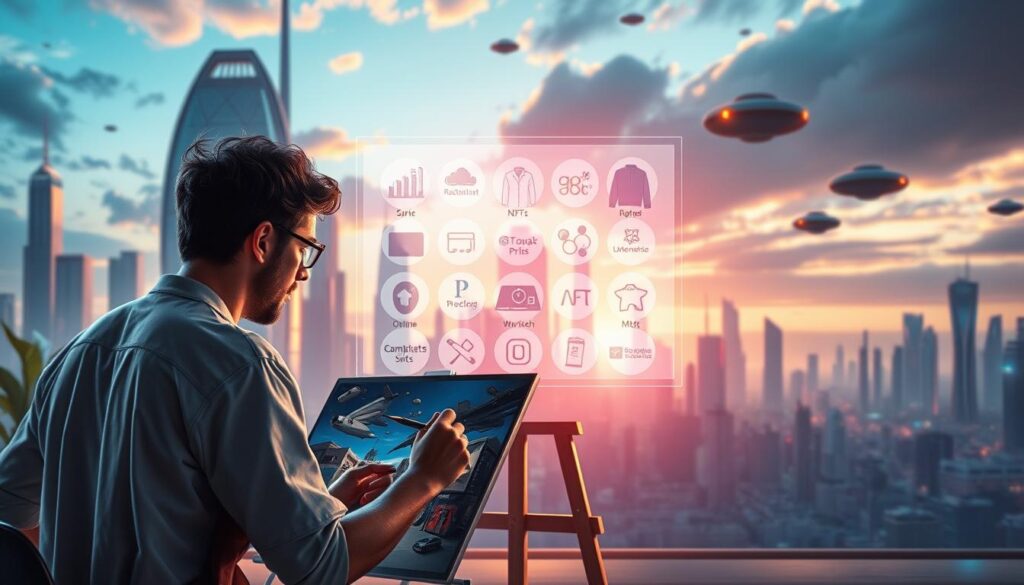
Print-on-Demand Merchandise
Printful integration cuts production costs by 30% compared to traditional methods. Focus on high-demand items like:
- Apparel: T-shirts with bold, original designs sell best
- Home decor: Canvas prints and throw pillows have steady demand
- Tech accessories: Phone cases with unique artwork gain traction
Market research shows seasonal trends impact sales. Prepare holiday collections 3 months in advance for optimal results.
Art Licensing Opportunities
Creative Fabrica hosts top-performing stores earning $5,000+ monthly through licensing. Protect your work with these essentials:
- Clear usage terms (number of copies, duration)
- Exclusivity clauses when appropriate
- Royalty percentages for ongoing payments
Start with small businesses needing branding assets. As your portfolio grows, approach larger publishers.
Creating Educational Resources
Share your expertise through courses and tutorials. Successful creators use this framework:
- Identify your unique skills (e.g., prompt engineering)
- Structure lessons from basic to advanced
- Offer downloadable resources like preset bundles
Platforms like Teachable handle payments while you focus on content. Bundle courses with community access for higher value.
“Adding affiliate links to recommended tools increased my passive income by 40% without extra work.”
Track which streams perform best using simple spreadsheets. Allocate more time to what generates consistent income while testing new ideas quarterly.
Legal Considerations for AI-Generated Art
Navigating legal landscapes is critical for protecting your creative work. As AI tools blur ownership lines, proactive measures ensure your rights stay secure. The US Copyright Office mandates *”substantial human modification”* for protection—here’s how to comply.
Copyright Protection Strategies
Registering your work strengthens legal claims. Follow this process:
- Modify outputs significantly: Invoke’s case study added 35 unique *elements* (e.g., textures, lighting) to AI drafts.
- File with the USCO: Submit before publishing to lock in rights.
- Watermark drafts: Use tools like Adobe Lightroom for subtle branding.
Documenting Your Creative Process
Proof of human input is key. Maintain logs with:
| Document Type | Purpose |
|---|---|
| Prompt iterations | Shows iterative refinement |
| Edit timelines | Proves time investment |
| Layer files (PSD) | Validates manual adjustments |
Store files in cloud services like Dropbox with timestamps. This builds a defensible paper trail.
Usage Rights and Licensing Terms
Clear contracts prevent disputes. Include these *elements*:
- Scope: Commercial vs. personal use.
- Exclusivity: Offer tiered *options* (e.g., 1-year exclusivity).
- Royalty models: 5–10% for merchandise sales.
“Our licensing template reduced client conflicts by 80%—clarity is everything.”
For international *business*, consult IP attorneys to align with local laws. Tools like LegalZoom automate this for $299/year.
The Future of AI Art: 2025 and Beyond
The next wave of innovation is reshaping how we create and consume digital content. With the online art market projected to hit $23.79 billion by 2030, artists must stay ahead of key trends and technologies. I’ve identified three critical areas that will define this space.
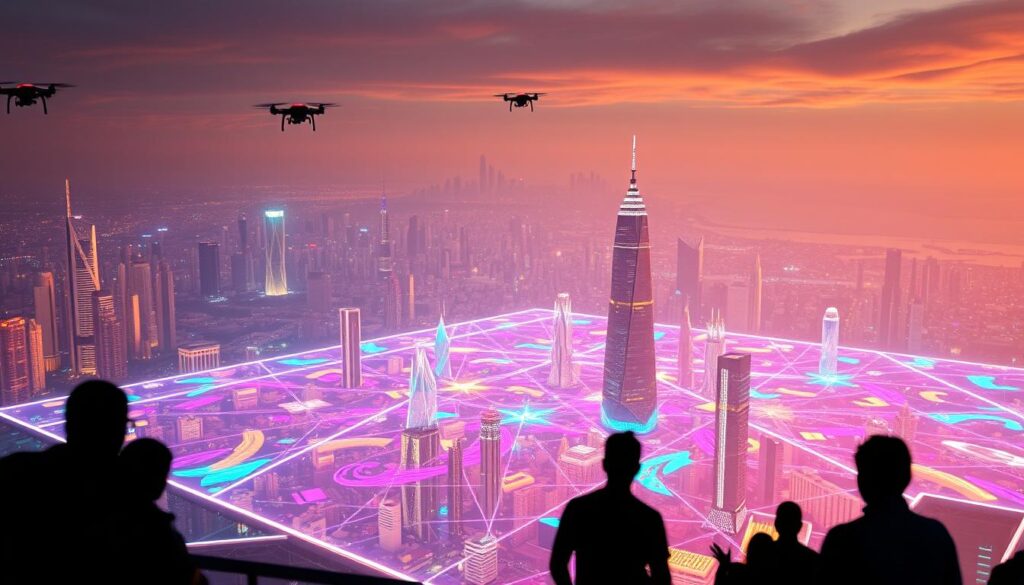
Breakthroughs in Generative Technology
Neural rendering is revolutionizing realism in AI-generated work. Tools now produce lifelike textures and lighting with minimal input. AR/VR integration adds immersive elements, letting buyers preview art in their spaces before purchase.
Video generation advancements are particularly exciting. Platforms like Runway ML enable:
- Real-time style transfer for dynamic content
- 4K upscaling for commercial projects
- Collaborative editing features for teams
Changing Buyer Expectations
Today’s collectors prioritize interactivity and personalization. A recent survey showed 62% prefer customizable digital pieces over static images. Emerging marketplaces cater to this demand with:
- 3D configurators for bespoke commissions
- Blockchain-based ownership verification
- Fractional investment options
Innovative Monetization Approaches
Subscription models are gaining traction. Services like Artifacts offer members exclusive drops for $15/month. DAO-driven communities allow collective ownership of high-value pieces.
Sustainability is becoming a key factor. Eco-conscious platforms:
- Offset carbon footprints from rendering
- Use green hosting solutions
- Prioritize ethical data sourcing
“The artists thriving in 2025 will blend technical mastery with environmental responsibility.”
These shifts present both challenges and opportunities. By adapting now, creators can position themselves for long-term success in this evolving landscape.
Conclusion: Launching Your AI Art Business
Starting your journey in this field requires strategy and persistence. Focus on building a strong foundation before scaling. Track key metrics like conversion rates and customer retention to measure progress.
Avoid common mistakes such as underpricing or neglecting contracts. Use platforms like Etsy and ArtStation to sell art effectively. Engage with communities to grow your network and gain feedback.
Set aside time weekly to learn new techniques. Online courses and forums help refine skills. With dedication, you can turn passion into profit.
Ready to get started? Begin with small steps—create daily, share often, and iterate based on results. The right approach lets you make art that resonates while building a sustainable business.
